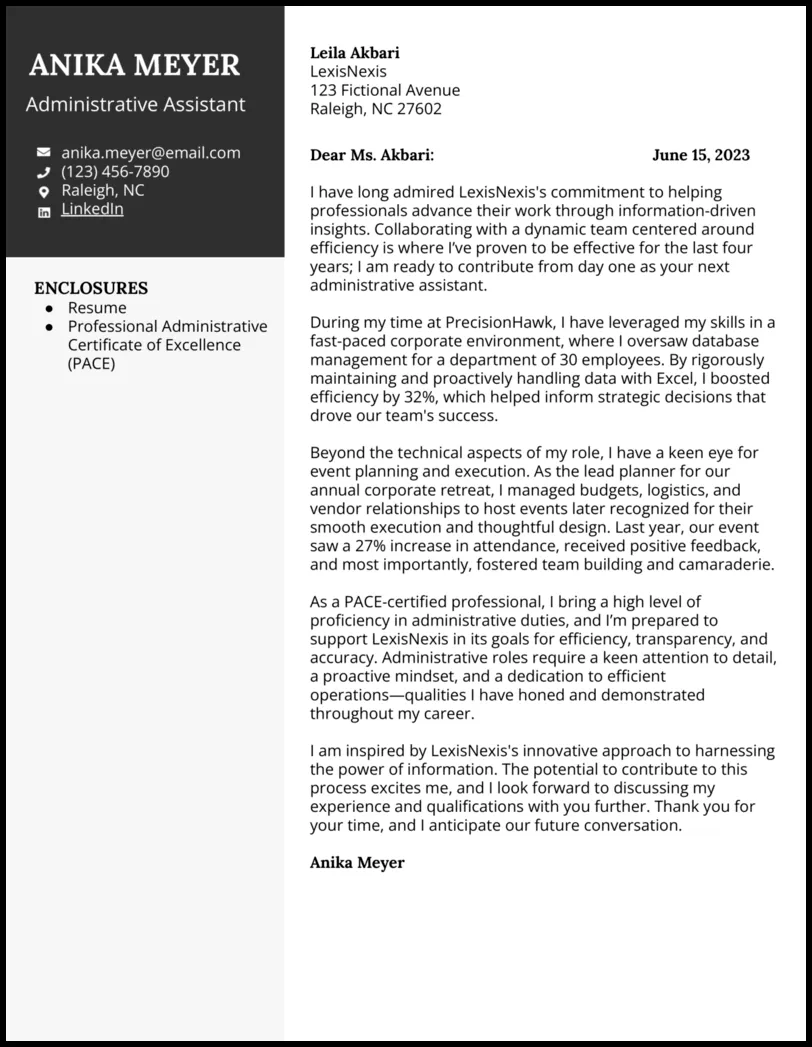Crafting a Compelling Administrative Assistant Cover Letter
A well-crafted cover letter is your first opportunity to make a strong impression on a potential employer. For administrative assistant roles, where attention to detail and communication skills are paramount, the cover letter becomes even more critical. This guide provides an ultimate overview of how to create a standout cover letter that highlights your skills and increases your chances of landing an interview. We’ll delve into key elements, best practices, and common pitfalls to help you present yourself effectively and persuasively. The goal is to showcase your suitability for the role and demonstrate your understanding of what the employer seeks.
Understanding the Purpose of a Cover Letter
Before diving into the ‘how,’ it’s essential to grasp the ‘why.’ The primary purpose of a cover letter is to introduce yourself, express your interest in the position, and explain why you are a suitable candidate. It complements your resume by providing context, showcasing your personality, and highlighting specific skills and experiences that align with the job requirements. It’s also an opportunity to demonstrate your communication skills and attention to detail, traits that are highly valued in administrative roles. Think of it as your personal sales pitch, where you are selling yourself to the potential employer.
Highlighting Your Key Skills
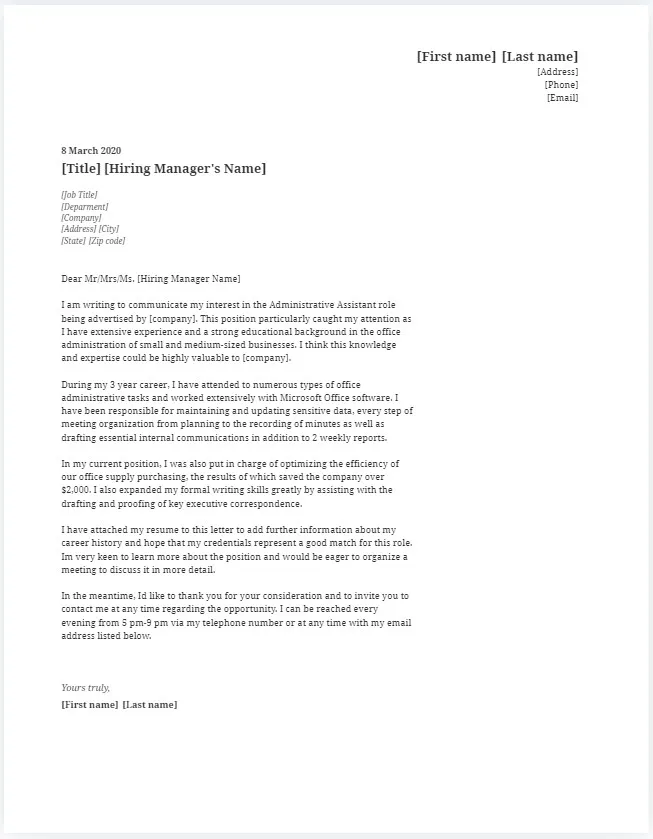
Administrative assistant roles demand a diverse set of skills. Your cover letter is the perfect place to showcase these, emphasizing those most relevant to the job description. Key skills to highlight include: organizational abilities, time management, communication (written and verbal), proficiency in relevant software (Microsoft Office, etc.), data entry, and problem-solving skills. Providing specific examples of how you have utilized these skills in past roles adds credibility and demonstrates your practical abilities. Remember to tailor your skill set to match the requirements outlined in the job posting.
Research and Tailoring
A generic cover letter is unlikely to make a lasting impression. Thorough research on the company and the specific role is crucial. Investigate the company’s mission, values, and recent activities. Tailor your cover letter to address the specific needs and requirements outlined in the job description. Demonstrate that you understand the company’s goals and how your skills and experience align with them. Mentioning specific projects, initiatives, or challenges the company is facing shows that you’ve done your homework and are genuinely interested in the position.
Essential Elements of an Administrative Assistant Cover Letter
A well-structured cover letter follows a standard format. It should be easy to read and clearly convey your qualifications. Proper formatting and the inclusion of key elements are crucial for making a positive impression. This section covers the essential components that will make your cover letter professional and effective.
Contact Information
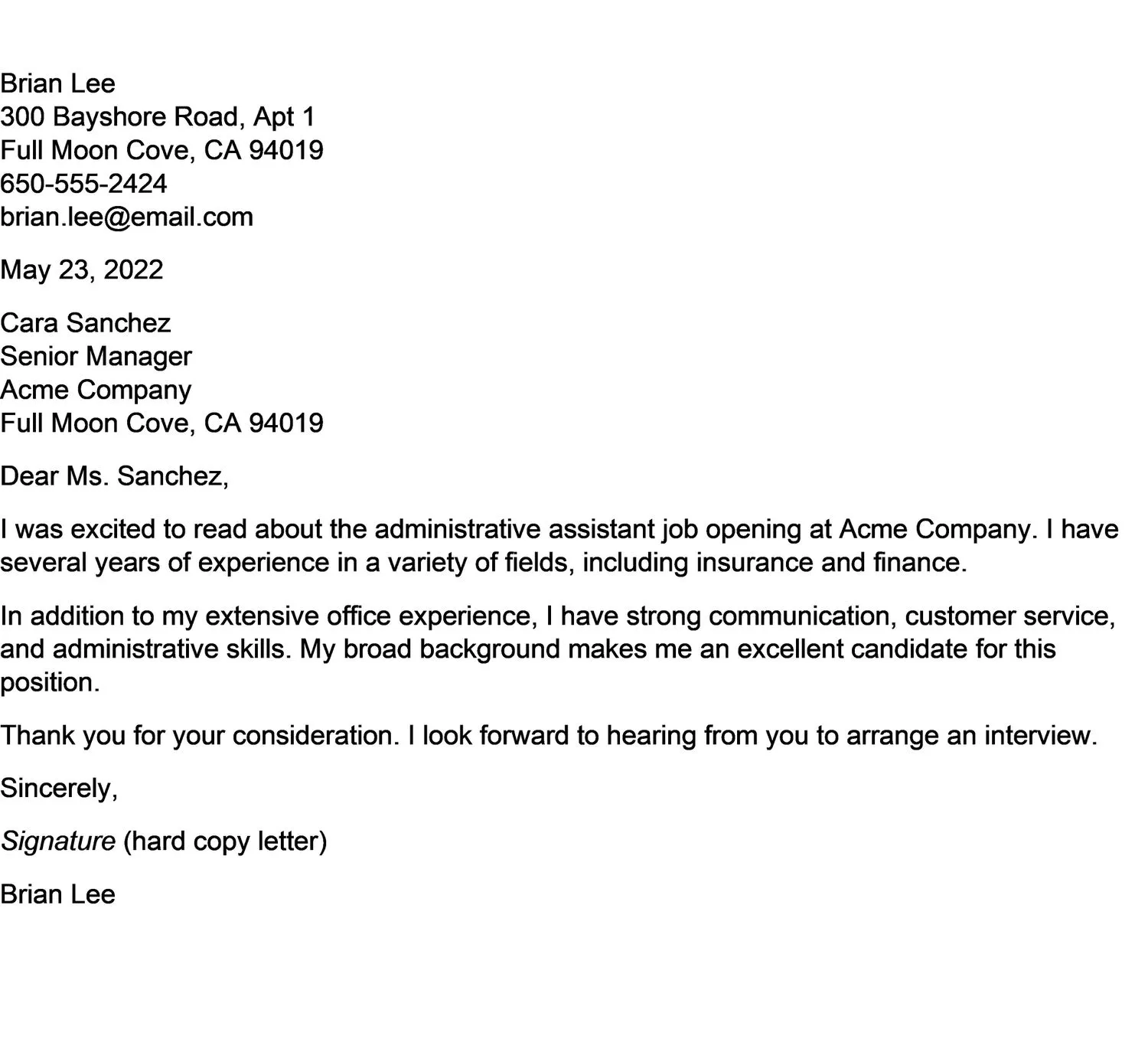
At the top of your cover letter, include your contact information. This typically includes your full name, phone number, email address, and optionally, your LinkedIn profile URL. Ensure that the contact information is current and professional. Make it easy for the hiring manager to reach you. This section allows the recruiter to quickly identify your contact details and reach out to you if necessary.
Professional Salutation
Start your cover letter with a professional salutation. Ideally, address the hiring manager by name. Researching the name of the hiring manager shows initiative and demonstrates that you’ve taken the time to learn more about the company. If the name isn’t available, use a general greeting such as “Dear Hiring Manager” or “Dear [Department Name] Hiring Team.” Avoid overly casual greetings like “Hi” or “Hello.”
Opening Paragraph
The opening paragraph should immediately grab the reader’s attention and state the purpose of your letter. Express your interest in the specific administrative assistant position and where you found the job posting. Briefly mention your key qualifications or a compelling achievement that makes you stand out. The opening paragraph sets the tone for your entire letter and convinces the reader to continue reading.
Body Paragraphs
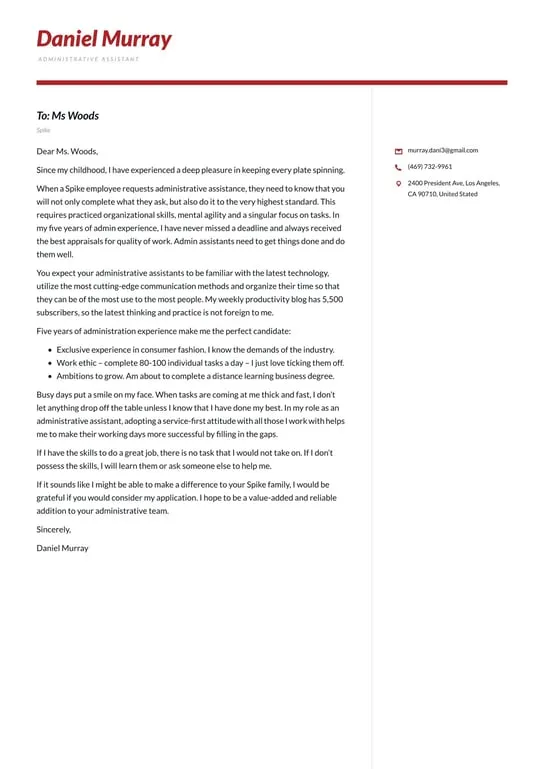
The body paragraphs are where you expand on your skills and experience. Use these paragraphs to highlight relevant achievements, quantify your accomplishments whenever possible, and demonstrate how your skills align with the job requirements. Provide specific examples to support your claims. Structure your paragraphs logically and keep them concise and focused. Address the key skills and experiences mentioned in the job description, illustrating how you’ve successfully applied them in previous roles. Each paragraph should focus on a specific aspect of your qualifications.
Closing Paragraph
In the closing paragraph, reiterate your interest in the position and thank the hiring manager for their time and consideration. Include a call to action, such as expressing your availability for an interview and providing your contact information again. Maintain a professional tone and express enthusiasm for the opportunity. End with a professional closing such as “Sincerely” or “Best regards,” followed by your full name.
Proofreading and Formatting
Proofreading and formatting are non-negotiable. Errors in your cover letter can undermine your credibility. Carefully review your letter for any typos, grammatical errors, and formatting inconsistencies. Consider using a grammar checker, and it’s always a good idea to have a friend or family member review your letter as well. A clean and professional presentation is crucial.
Best Practices for Formatting
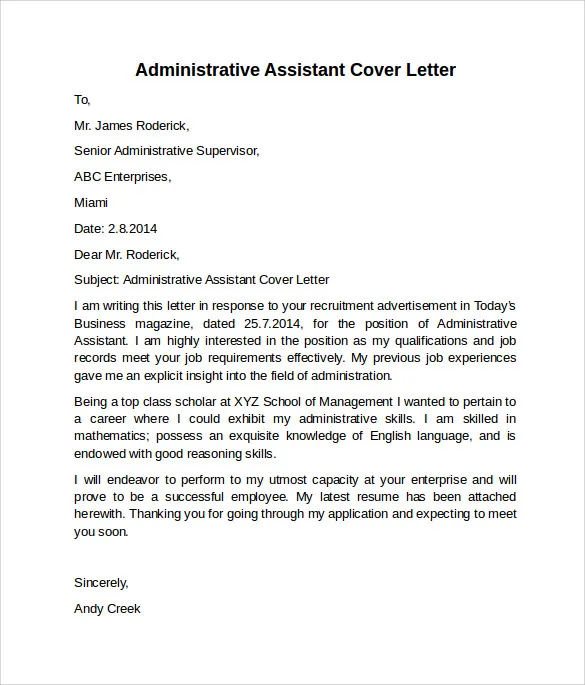
Use a standard font like Times New Roman, Arial, or Calibri, and keep the font size between 10 and 12 points. Use single-spaced lines with a space between paragraphs. Maintain consistent margins (typically 1 inch on all sides). Ensure the letter is well-organized with clear headings and sections. Avoid using overly complex formatting or excessive use of colors and graphics, as it can distract from your content.
Avoiding Common Mistakes
Certain mistakes can immediately disqualify you from consideration. Being aware of these pitfalls allows you to avoid them and make a stronger application. This section discusses common errors to avoid when writing your cover letter.
Generic Language and Lack of Enthusiasm
Avoid using generic phrases and clichés that could apply to any job. Your cover letter should show genuine interest in the specific role and company. Instead of saying, “I am a hard worker,” provide a specific example of how you demonstrated hard work in a previous role. Express enthusiasm for the opportunity and demonstrate a clear understanding of why you’re interested in the company.
Typos and Grammatical Errors
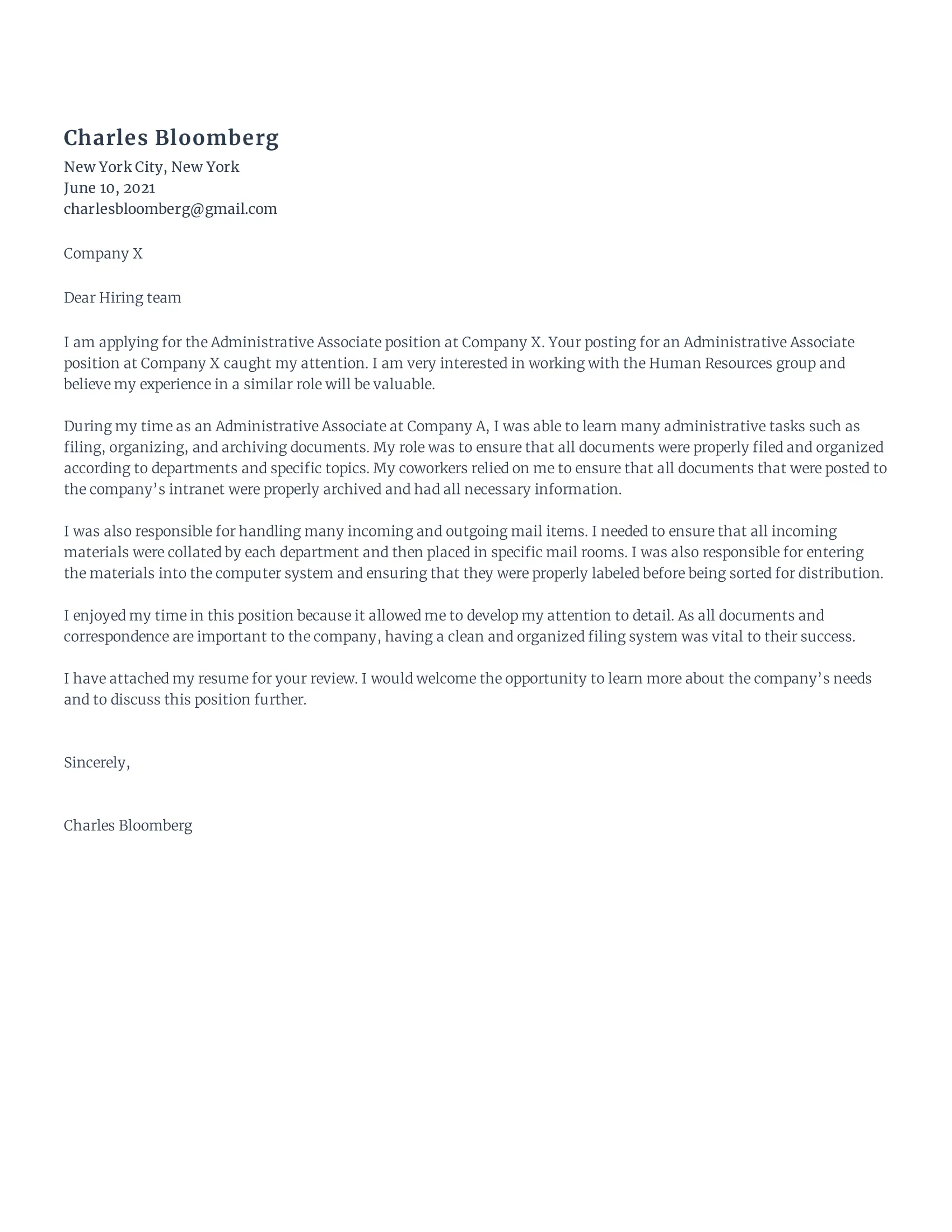
Typos and grammatical errors can damage your credibility. Carefully proofread your cover letter before submitting it. Use grammar and spell-checking tools, but don’t rely solely on them. Ask a friend or family member to review your letter for errors. Even small errors can convey a lack of attention to detail, a critical trait for administrative roles.
Ignoring the Job Description
Failing to tailor your cover letter to the specific job description is a common mistake. Read the job description carefully and identify the key skills and requirements. Customize your cover letter to address these points directly. Highlight the relevant experiences and skills that match the employer’s needs. Showing that you understand the requirements demonstrates your ability to follow instructions and your interest in the specific role.
Showcasing Your Value
The goal of your cover letter is to convince the employer that you are the best candidate. The following strategies will help you demonstrate your value and make a strong case for why you should be hired.
Quantifying Achievements
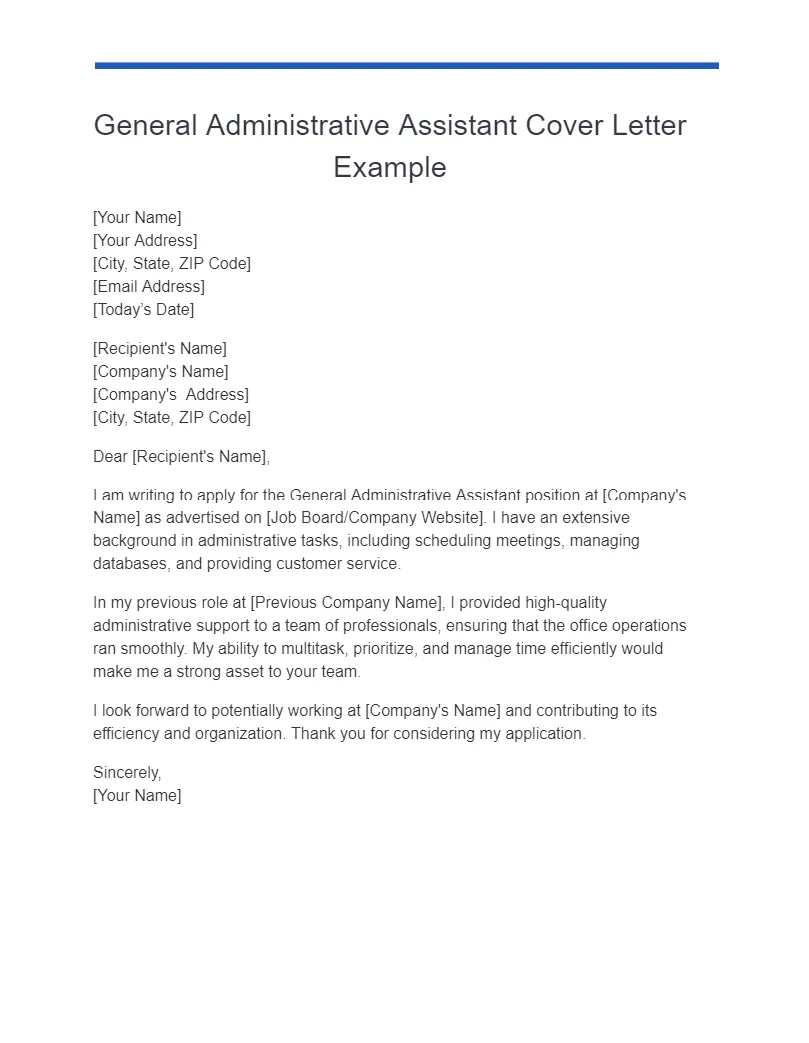
Whenever possible, quantify your achievements. Use numbers and data to illustrate your accomplishments. For example, instead of saying “Managed a high volume of phone calls,” say “Managed an average of 100+ phone calls daily, ensuring a 95% customer satisfaction rate.” Quantifiable achievements are more impactful and demonstrate your ability to deliver results.
Using Action Verbs
Use action verbs to make your cover letter more dynamic and engaging. Start your sentences with strong action verbs that describe your accomplishments. Examples of action verbs include: managed, organized, coordinated, implemented, developed, improved, and achieved. Action verbs make your writing more concise and demonstrate your proactive approach.
Tailoring to the Specific Job
Customize your cover letter for each job application. Review the job description and tailor your skills and experience to match the specific requirements. Highlight the most relevant qualifications and use the same keywords and phrases as those used in the job description. Showing you understand the job responsibilities and how you fit the role is essential for making your cover letter stand out.
Example Cover Letter Breakdown
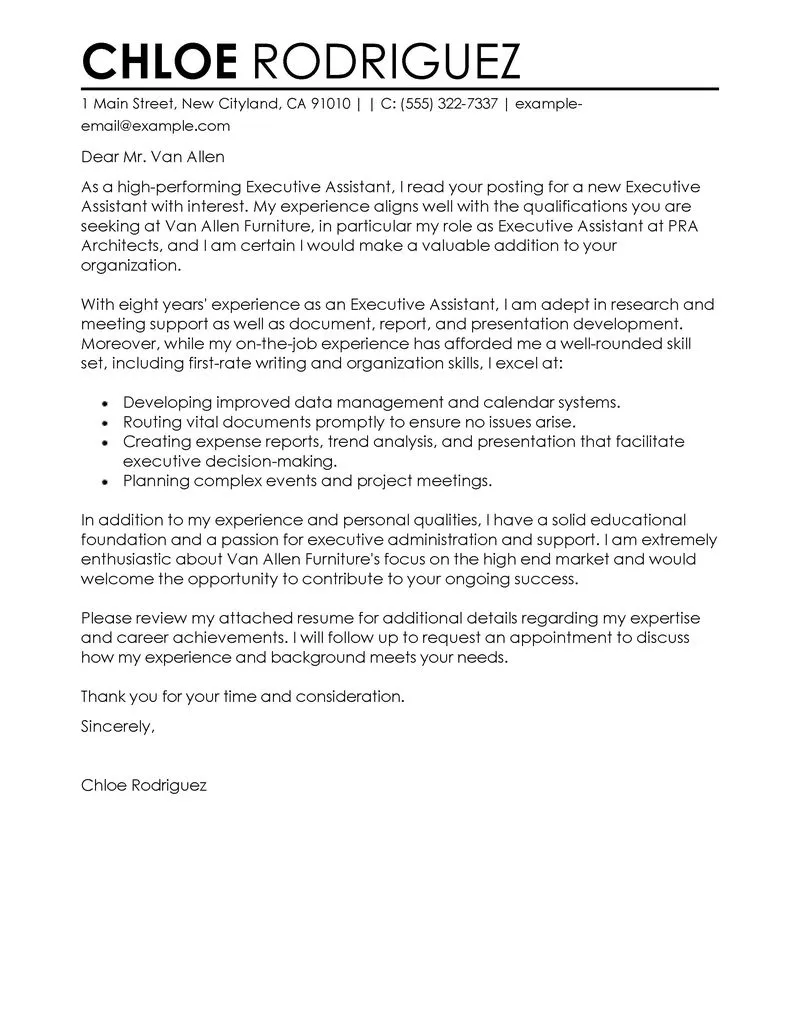
Analyzing a successful cover letter helps you understand how to apply these principles. Reviewing real-world examples can provide practical insights. This section provides an example cover letter and breaks down its key components to help you create a persuasive letter.
Analyzing a Successful Cover Letter
A successful cover letter effectively highlights the candidate’s skills and experience, addresses the specific job requirements, and demonstrates enthusiasm for the opportunity. It presents a clear and concise narrative. Analyze the language, structure, and key phrases used in the example to understand the elements that make it effective. Consider how the candidate has quantified achievements and emphasized relevant skills to make their qualifications apparent.
Key Phrases and Language
Pay attention to the specific phrases and language used in a successful cover letter. Note how the candidate expresses their interest, highlights their skills, and quantifies their achievements. The example cover letter helps you identify the effective wording that emphasizes relevant skills and experiences. Using similar language can make your cover letter more persuasive and impactful. Identify the phrases that best suit your style and skills to add credibility to your claims.
Adaptable Cover Letter Template
Creating a template you can adapt for each job application saves time and ensures that you include all necessary components. A versatile template allows you to customize your cover letter based on the specific requirements of each role. This section offers a template, outlining essential sections that you can tailor to showcase your skills and experience. Remember to modify the template for each application.
